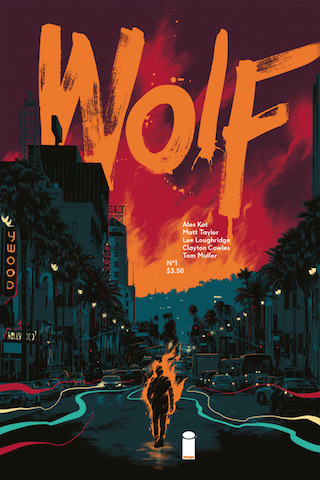Thursday comics hangover: Los Angeles is a magical place
(Every comics fan knows that Wednesday is new comics day, the glorious time of the week when brand-new comics arrive at shops around the country. Thursday Comics Hangover is a weekly column reviewing some of the new books that I pick up at Phoenix Comics and Games, my friendly neighborhood comic book store.)
I swear every month brings a new comic series about a paranormal investigator. It's one of the most overplayed ideas out there — a down-on-his-luck detective who bumps into demons or vampires or some other creature-of-the-week riff. The last iteration of the trope that I bought into was Paul Jenkins and Humberto Ramos's terrible series Revelations, which read like toothless John Constantine: Hellblazer comics. The paranormal investigator is the laziest way to present supernatural fiction, by giving us a jaded main character who explains everything to the reader. Why mess with this stuff if you're not going to try to instill a sense of wonder or horror or surprise in the reader?

The first time we meet our hero, Antoine Wolfe, he's on fire. But he's not really in any hurry to put himself out. Instead, he wanders around the back roads of Los Angeles, singing a Robert Johnson song to himself. We learn that Wolfe may (or may not) be immortal. At least, he seems to think he is. Wolfe's Los Angeles is packed with vampires and corrupt businessmen looking to hush up a murder or two. Around every corner is a goon waiting to knock him out and throw him in the trunk of a car. And Wolfe, who is African-American, understands that while the supernatural is dangerous, he's just as likely to get killed by a racist asshole with an axe to grind. The world is a dangerous place for him on multiple levels.
Taylor's art helps to sell the story's sunbaked Lovecraftian noir by staying simple and realistic. The cars look like cars, the people behave like people — Wolfe punches like a man who took a boxing class, in direct defiance of most ridiculous comics combat styles — and colorist Lee Loughridge keeps everything soaked in nauseating tones of green, so even the most ordinary panels seem to leak out a menace that's swirling just beneath the ink and paper.
Kot seems to know what he's doing here as he lays out the rules of Wolf's magic. We see a surprising array of supernatural aspects in the course of one single issue, but all the different menaces seem to behave similarly; magic is something that visits you and never leaves. It haunts people, including Wolfe, plucking at their sanity like a novice playing with a harp. It's hard to tell who's an eccentric urban mage and who's another schizophrenic, dumped on the street by a system that stopped caring decades ago. In other words, it looks a lot like real life.